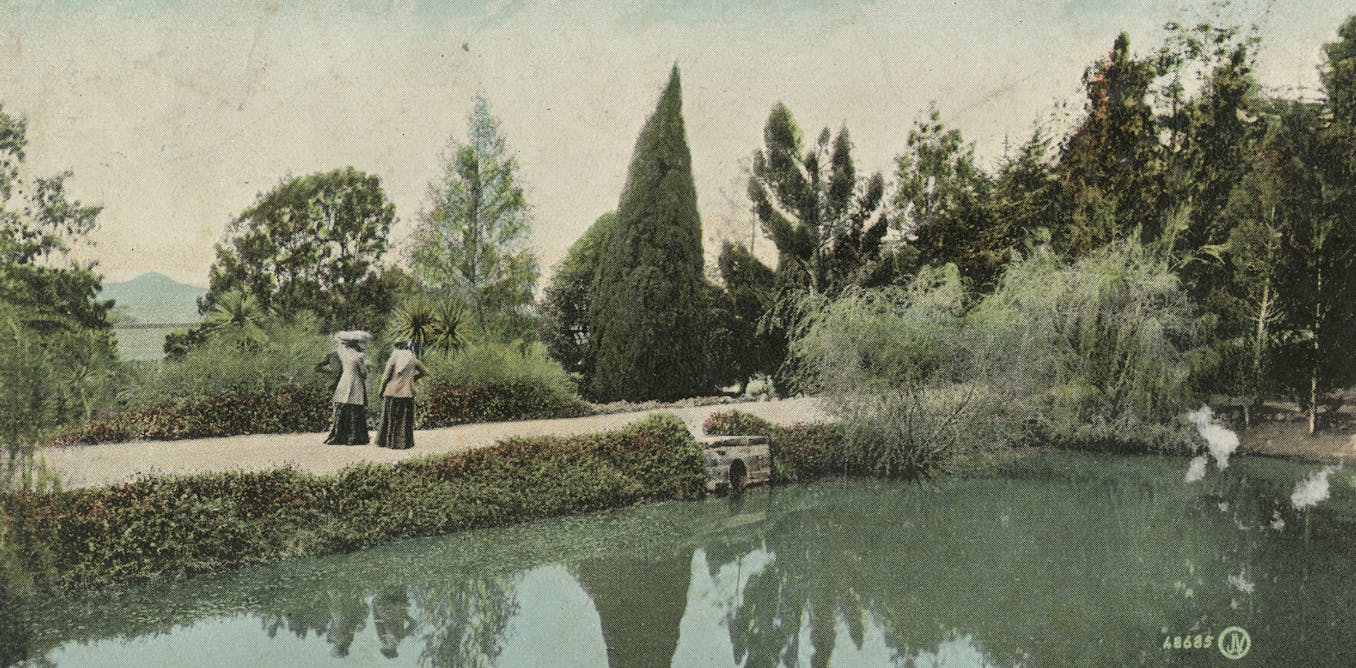Can we justify sustaining water-hungry botanic gardens in an age of native climate change and rising water prices?
Perhaps such gardens will not be suited to Australia’s altering native climate – within the occasion that they ever had been.
It is easy to argue Australian botanic gardens are imperial remnants full of European crops, an an increasing number of uncomfortable reminder of British colonisation.
Nevertheless gardens, and their gardeners, aren’t static. They’re intrinsically altering entities.
A fast historic previous
Most Australian botanic gardens had been established inside the nineteenth century, starting with the yard inside the Sydney Space spherical 1816.
The earliest gardens served a variety of options.
They’d been meals gardens. They’d been check out gardens used to find out the suitability of crops and greens launched from Europe and totally different colonies.
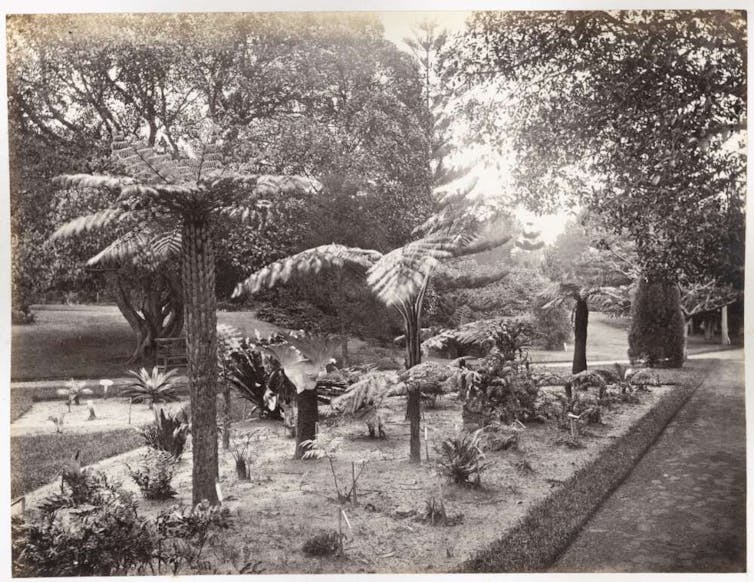
The Sydney Botanic Gardens, photographed proper right here between 1860 and 1879, had been established in 1816.
Nostalgia, European ideas of magnificence and the necessity to test launched varieties meant botanic gardens had been planted with bushes acquainted to British company. Oaks, elms and conifers had been all planted, along with the types of flowers and shrubs naturalised in British private and public gardens.
Launched crops and bushes had been distributed to settlers as part of acclimatisation – the introduction of distinctive crops supposed to remodel the Australian panorama to a additional acquainted one and make it “productive”.
Botanic gardens moreover reversed this variation by amassing, cultivating and internationally distributing Australian native crops deemed in all probability useful or beautiful.
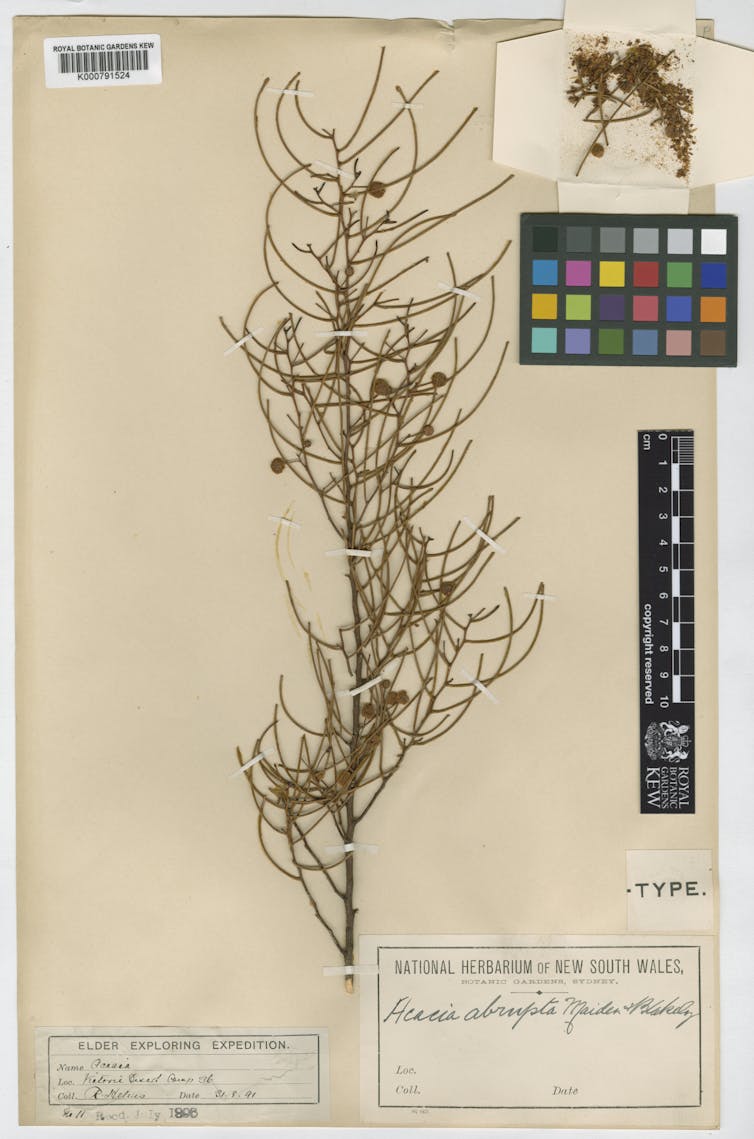
Australian specimens had been often collected by botanic gardens and despatched to Europe.
Be taught additional:
Friday essay: the forgotten German botanist who took 200,000 Australian crops to Europe
Lastly, and most controversially, they’d been public areas.
Australian public gardens drew on then new ideas from European social reformers and progressive politicians. These gardens had been seen as providing healthful air for the residents of an increasing number of crowded cities. They’d been moreover constructed on older ideas about commons and provision of shared public home for the recreation of the poorer classes.
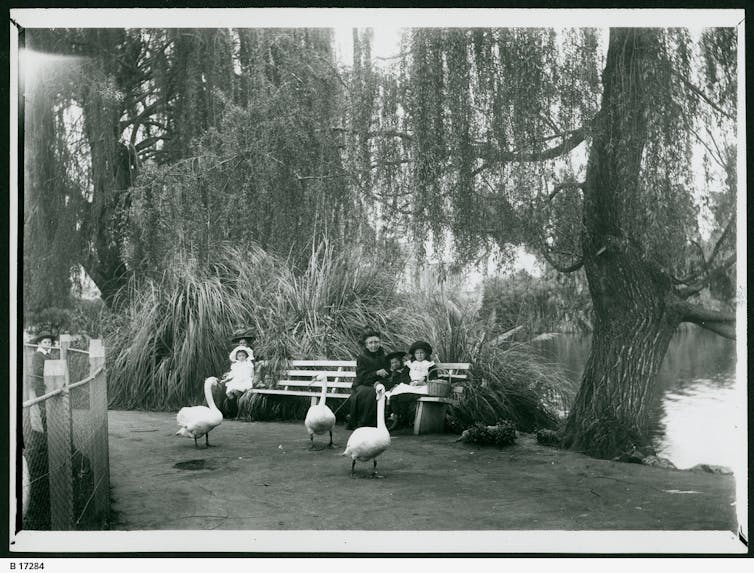
Australia’s botanic gardens had been public areas.
These completely totally different makes use of usually clashed. Ferdinand Mueller, director of the Melbourne Botanic Gardens, was arguably displaced from his place on account of his imaginative and prescient of the yard was as an tutorial botanical nursery. Public demand had shifted to a necessity for a additional aesthetic and usable yard.
Going by means of the native climate emergency
Water for bushes and decorative crops drawn from very completely totally different climates had been always a problem for these gardens.
As early as 1885, Richard Schomburgk in his place of director of the Adelaide Botanic Gardens instructed Nature regarding the drought affecting that metropolis and the drastic impression it was having “upon plenty of the bushes and shrubs inside the Botanic Yard, natives of cooler worldwide areas”.
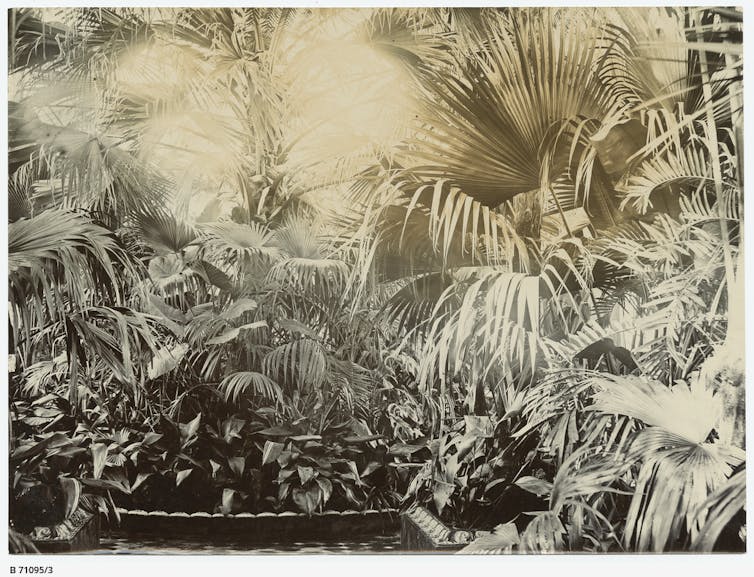
Drought was affecting the Adelaide Botanic Gardens as early as 1885.
As a result of the native climate has shifted, droughts, changes in water desk and native climate change uncertainty have foregrounded the plight of these thirsty bushes, and some have died.
The Geelong Botanic Gardens, established in 1851, current an occasion of water demand and the work carried out to retain historic bushes, using wastewater to deal with these plantings. The yard moreover now has a “Twenty first-Century Yard” focused on sustainability, containing hardy natives along with acacias, eremophila, saltbush and grasses.
At current’s botanic gardens are nonetheless check out gardens, and are literally mandatory web sites for worldwide native climate change evaluation. They show what to not plant, however moreover that not all launched crops are unsuited to Australian conditions.
Adelaide Botanic Gardens provide a plant alternative info the place residents can take a look at whether or not or not a plant is suited to their native conditions.
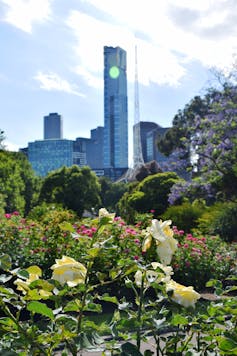
The Melbourne Royal Botanic Gardens embrace a present of roses suited to an Australian native climate.
The Melbourne Royal Botanic Gardens have a “native climate ready” rose present, a reframing of the decimated species rose assortment, which adjusts distinctive planting to native climate change, with out throwing the kid out with the (diminishing) bathtub water.
Some European, Mediterranean, North and South American crops are exactly suited to Australian climates, or are robust adequate to adapt to changes which embrace elevated drying and heat in plenty of areas, however moreover the potential for elevated humidity in beforehand arid zones.
Colonial memorials
There was a present improvement to erase reminders of our colonial earlier.
Do the right lessons come from eradicating colonial memorials, or from rewriting their which implies? Pull out the large bushes and distinctive gardens, or use them to show and have a look at the assumptions and errors of the earlier, along with to design the long term?
Quite a few yard exhibitions, such as a result of the touring Yard Choice photos exhibition, do the latter, foregrounding the problematic historic previous along with the long term potentialities of the home.
Many gardens moreover now embrace Indigenous acknowledgement and content material materials: heritage walks, excursions, and talks by Indigenous owners to show the prolonged historic previous, naming and makes use of of native crops which overturn their colonial positioning.
Shifting landscapes
Australia’s botanic gardens have modified hundreds over the earlier 200 years.
Botanic gardens are adapting to native climate change, altering dying and harassed bushes and outdated gardens with hardier varieties and new potentialities, conserving endangered species and performing as proving grounds for native climate impacts.
For a few years, state and nationwide gardens identical to the Western Australian Botanic Yard and regional gardens like Mildura’s Inland Botanic Gardens have put in indigenous, native or climate-focused gardens, along with or as a substitute of the conventional heritage European mannequin.
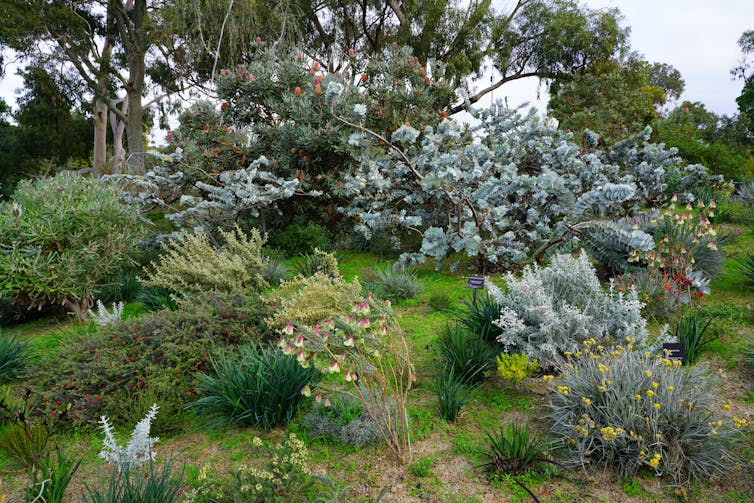
Gardens identical to the Western Australian Botanic Yard are an increasing number of showcasing native crops.
Botanic Gardens Australia and New Zealand affords a panorama succession toolkit: a info for mapping out what’s doomed, what most needs preserving and what variations are most pertinent for our botanic gardens of the long term.
Lastly, we don’t wish to tear out non-hardy launched bushes: native climate change will progressively take away them for us.
